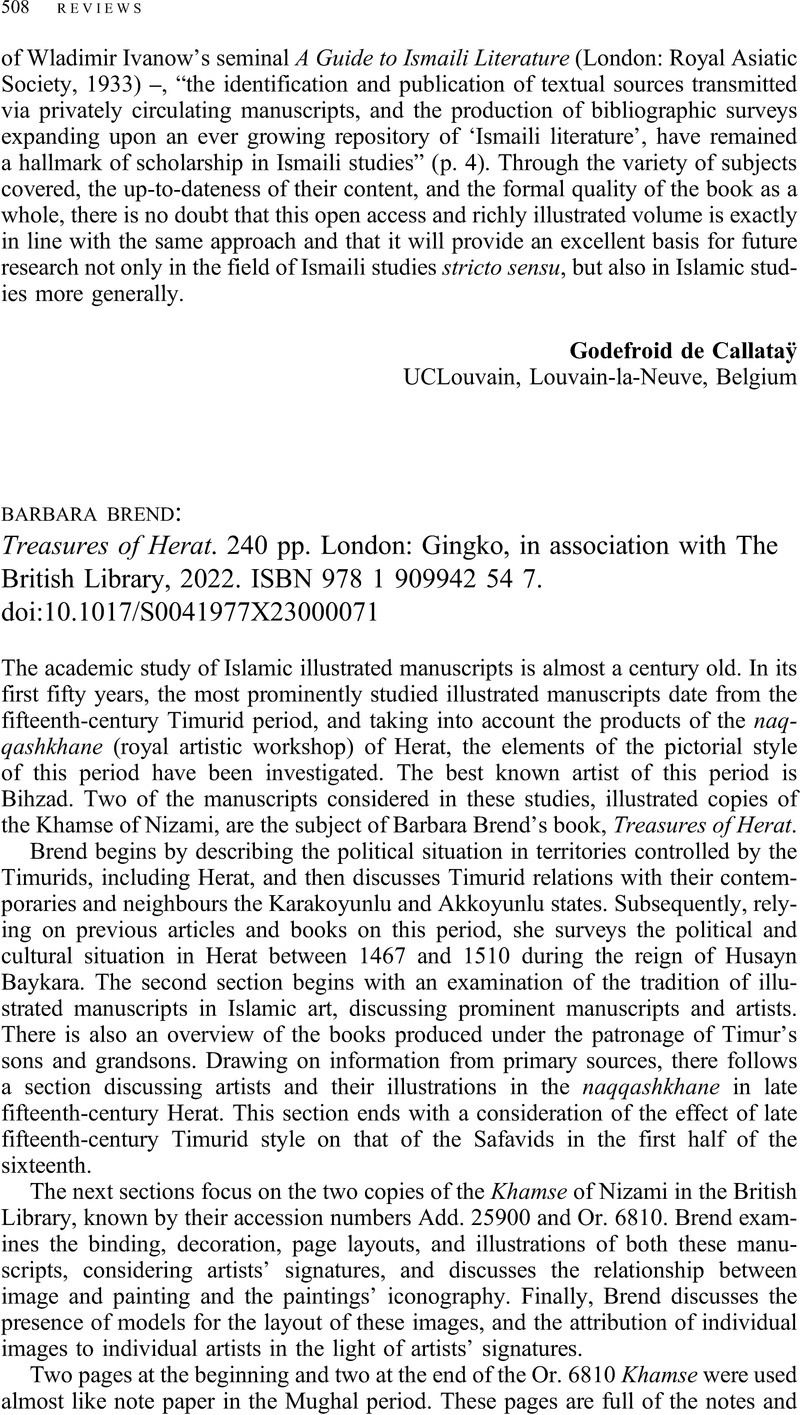No CrossRef data available.
Article contents
Barbara Brend: Treasures of Herat. 240 pp. London: Gingko, in association with The British Library, 2022. ISBN 978 1 909942 54 7.
Review products
Barbara Brend: Treasures of Herat. 240 pp. London: Gingko, in association with The British Library, 2022. ISBN 978 1 909942 54 7.
Published online by Cambridge University Press: 07 March 2023
Abstract
An abstract is not available for this content so a preview has been provided. Please use the Get access link above for information on how to access this content.

- Type
- Reviews: The Near and Middle East
- Information
- Copyright
- Copyright © The Author(s), 2023. Published by Cambridge University Press on behalf of SOAS University of London



